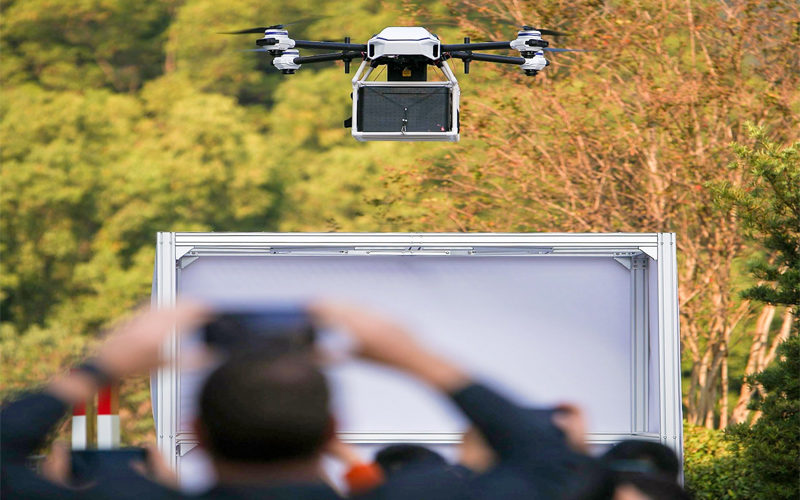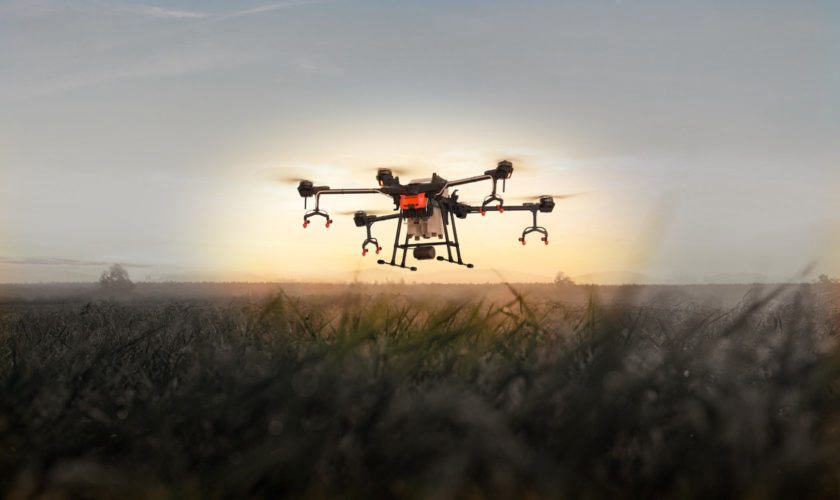The coronavirus outbreak in China has led to some unprecedented measures to contain the spread. Beyond country-wide lockdowns and travel bans, drone technology is being put to use to aid the fight on the frontlines.
You may have seen early reports of drones being used over the streets to spot and target people not wearing masks, and basically shout at them through loudspeakers. This “use” was widely covered in the media.
However, drones are also being deployed in much more effective ways.
Disinfection
Drones are being used to spray disinfectant over infected areas from the air. XAG, a Chinese manufacturer of agricultural drones, is actively pitching in to combat the coronavirus with innovative technologies, as well as assisting local governments on public health safety.
They have set up a RMB 5 million fund, and have committed to providing XAG’s agricultural drone users with technical support to properly carry out aerial coronavirus disinfection spraying to help curb the spread of virus.
This has been targeted especially towards rural villages with weaker health systems and poorer sanitation conditions. Operations will also target densely populated outdoor public places and communities having both confirmed or suspected cases of coronavirus.

Another focus is the intensive cleaning and disinfection of medical and epidemic prevention vehicles moving between affected and unaffected areas. During the nationwide drone disinfection operation, XAG will cover all the spare parts and maintenance expenses for those who voluntarily engage in disinfection operations.
Disinfecting actions will be taken under the permission of Centre for Disease Control and Prevention and relevant government authorities.
Dominant drone maker, DJI has also committed around US$1.5 million in aid to help contain the outbreak. DJI has adapted its Agras series of agricultural spraying drones to be used to spray disinfectant in potentially affected areas. A chlorine or ethyl alcohol-based disinfectant will be sprayed from the air, where the concentration of the solution as well as flight guidelines can be modified for different circumstances, such as whether an area is known to be infected or not.
DJI has already sprayed disinfectant across over 3 million square metres in Shenzhen, where the company is headquartered. The company is also helping 1,000 counties in China to adopt these spraying methods with target areas including factories, residential areas, hospitals, and waste treatment plants.
Medical Transportation

Drones are also aiding in the delivery of critical test samples and medical supplies between hospitals and other medical centres quickly and efficiently.
In Xinchang County (Zhejiang Province), a medical delivery drone flying from the People’s Hospital of Xinchang County to the disease control centre of Xinchang County successfully completed automated air transportation of critical medical samples.
This was the first “urban air transportation channel” designed to help to fight the coronavirus. The company behind the delivery, Antwork, actively contacts local hospitals, supports epidemic prevention with practical actions, and coordinates with local governments and medical related units to ensure the timely and rapid delivery of medical samples and protection materials via a specially set up drone transportation network.
Antwork’s system is automatic and unmanned, so can significantly reduce the contact opportunities between samples and personnel in the transportation process, as well as improve the delivery speed. A subsidiary of Antwork, Aerodeli, obtained the world’s first urban drone delivery license issued by Civil Aviation Administration of China (CAAC) in October 2019.



0 Comments
Leave a comment